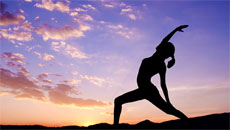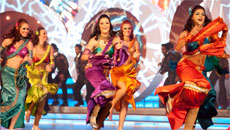Vitamin D has been a hot topic among doctors and nutritionists lately, particularly when it comes to challenging its dosage requirements and overall benefits. Regular Vitamin D intake has been linked to decreasing the effects of diseases and conditions such as osteoporosis, breast cancer, diabetes, heart disease and depression.
It also plays a significant role in the development of healthy bones and overall mental and physical well being. In addition, it has also been associated with decreasing a medical condition known as rickets, which was common in infants and children and was developed as a result of the body’s inability to mineralize bones. Through the help of Vitamin D, this disease is rarely heard of in today’s day and age.
Vitamin D’s main biological function is to sustain normal blood levels of calcium and phosphorus in your body. Vitamin D helps absorb calcium in addition to the formation and maintenance of strong and healthy bones.
But how much do we really know about this “sunshine vitamin” and are the benefits as good as they’re cracked up to be?
MYTH: Vitamin D is a type of Vitamin.
FACT: Even though it is referred to as a vitamin, Vitamin D is actually a powerful hormone called calcitrol that is synthesized from cholesterol, which explains why a lot of fatty fish and foods are high in Vitamin D.
MYTH: Your body can generate Vitamin D when exposed to any sort of sunlight.
FACT: The therapeutic effects of Vitamin D can only be obtained by exposing your skin to direct sunlight. The rays cannot penetrate and therefore cannot make their way into your body if it is not exposed to direct sunlight.
MYTH: You can get a sufficient amount of Vitamin D through normal dietary intake and regular exposure to sunlight.
FACT: It is impractical to obtain sufficient amounts of Vitamin D through normal dietary intake and exposure to sunlight. Supplements are necessary. The best way to know whether you are deficient in Vitamin D is by getting a Vitamin D blood test during your next doctor’s visit.
MYTH: It does not matter where you live. As long as you are exposed to direct sunlight, your body will automatically generate Vitamin D regardless of your location.
FACT: Your body generates Vitamin D after being exposed to direct sunlight after coming in contact with UVB rays.
The closer you live to the equator, the higher your exposure to direct sunlight, thus resulting in a higher amount of Vitamin D generated by your body. Those living farther away from the equator above 37 degrees latitude in areas such as Canada, Alaska and the UK would need more exposure in order to generate the same amount of Vitamin D than those living in South America, Africa and Indonesia. For the majority of North Americans, this presents a strong problem, which is why they may have to opt for other methods to include Vitamin D in their daily lifestyle, especially during the winter months.
The best way to ensure that you are receiving an adequate amount of Vitamin D in your daily intake is through dietary or oral supplements. Vitamin D can also be found in oily fish such as sardines, herring, mackerel, halibut and wild salmon. Another option to include Vitamin D in your daily diet is through Vitamin D fortified milk, alfalfa, oatmeal or cod liver oil.

MYTH: The pigment of your skin will not affect the amount of Vitamin D generated in response to exposure to direct sunlight.
FACT: The pigment of your skin has a huge effect in how much Vitamin D your body generates as a result of exposure. People with darker pigments can require as much as twenty times the exposure of those with lighter pigments.
MYTH: A Vitamin D deficiency can result in a higher risk of cancer.
FACT: There is no scientific evidence to conclude that Vitamin D deficiency results in a higher risk of cancer.
MYTH: Even though Vitamin D supplements present the same benefits as exposure to sunlight, you are also exposed to a risk of vitamin D toxicity.
FACT: The standard recommended daily intake for Vitamin D is 200 IU for children and adults
The truth is, majority of us are deficient in Vitamin D. Signs and symptoms of deficiency include fatigue, muscle pain, spontaneous weight gain and headaches. Symptoms like fatigue are particularly noticeable during the winter when you feel exhausted for no apparent reason. This is also known as SAD or Seasonal Affective Disorder. An adequate amount of Vitamin D is also essential in the production of serotonin, which plays a vital role in maintaining healthy brain function. A deficiency in Vitamin D has also been linked to osteoporosis.
Elderly people that are at risk of bone fractures could also benefit from a slightly higher intake of Vitamin D in their lifestyle. Medical research in the United States has proven that Vitamin D combined with calcium can reduce bone loss and fractures.
Obese people may also be at risk as their bodies tend to have difficulties absorbing Vitamin D. Recent Norwegian studies have concluded that the more obese a person is, the more deficient he or she may be in Vitamin D.
However, you can overdose on Vitamin D if you have more than 40,000 IU per day, which can result in Vitamin D toxicity or hypercalcemia. If you overdose on Vitamin D3, this can result in suppression of your immune system. Vitamin D poisoning is also known as Hypervitaminosis D, which is usually a result of overdosing on supplements. Hypervitaminosis can end up damaging your kidneys and also cause hypertension.
MYTH: It doesn’t matter what form of Vitamin D you take. They are all the same.
Fact: Most people should opt for Vitamin D3 (calcitriol) as it is three times more effective than Vitamin D2.
Although the complete benefits of this myth vitamin are still not fully understood, it is vital to get the RDA of Vitamin D for healthy bone, brain and body functioning. If you believe that you may be deficient in Vitamin D, it is imperative that you speak to your doctor or nutritionist before taking any supplements.






